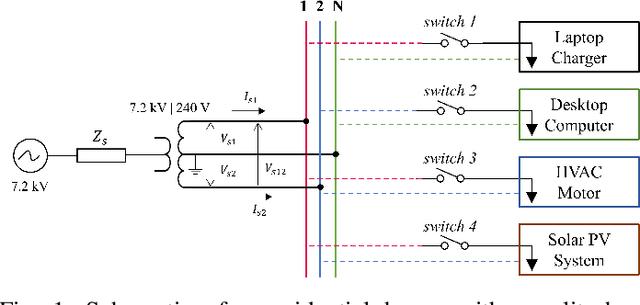Harmonic Modeling, Data Generation, and Analysis of Power Electronics-Interfaced Residential Loads
Paper and Code
Nov 05, 2021



Integration of electronics-based residential appliances and distributed energy resources in homes is expected to rise with grid decarbonization. These devices may introduce significant harmonics into power networks that need to be closely studied in order to accurately model and forecast load. However, it can be difficult to obtain harmonic-rich voltage and current data -- necessary for identifying accurate load models -- for residential electrical loads. Recognizing this need, first a set of electronics-based end-use loads is identified and modeled in an electromagnetic transients program tool for a residence. Second, an impedance-varying method is proposed to generate harmonic data that captures harmonic propagation to the supply voltage and harmonic interactions among end-use loads connected to the same supply voltage. Third, a harmonic-rich dataset produced via the proposed methodology is demonstrated to successfully identify frequency coupling matrix-based harmonic load models using the least-squares method. Numerical results demonstrate the accuracy of the model. The impact of limited data availability on model identification is also explored.
 Add to Chrome
Add to Chrome Add to Firefox
Add to Firefox Add to Edge
Add to Edge